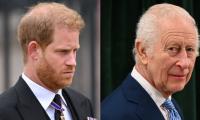It is a fact that during the British rule and even after Independence, no beautiful and magnificent building like the Mohatta Palace has been built in the country so far. The palace, built in the Clifton area just 14 years before the creation of Pakistan, is still the centre of attraction.
When I first visited this impressive palace, I felt as if I had reached the ancient era of hundreds of years ago, when the Subcontinent was ruled by kings and emperors. The pink stones used in the construction of the palace were specially ordered from Jodhpur, Rajasthan, India. The pictorial glimpses of flowers and birds were carved in an eye-catching way. A Shiva temple was also built for worship purposes in the premises, but its remains are nowhere to be found.
This two-storey magnificent palace, consisting of 16 rooms, also has interesting cultural history. Before the creation of Pakistan, Rai Bahadur Shivratan Chandraratan Mohatta was one of the richest Hindu businessmen in Karachi. His family migrated from Calcutta and settled in the city. He had a good reputation in the fields of sailing and shipbuilding.
Mohatta deeply loved his wife who was suffering from a deadly disease. Knowing that the sea climate could improve her health, he decided to build a magnificent palace for his wife in Karachi, on the shores of the Arabian Sea. And so a glorious palace in the history of the Subcontinent was constructed on the shores of Clifton in Karachi under the name of Mohatta Palace. Rai Bahadur Mohatta also held a grand celebration at the palace to celebrate his wife’s complete recovery. Among the distinguished guests were various dignitaries including Jamshed Nusserwanjee Mehta, the first elected mayor of Karachi.
After Independence, Mohatta and his family decided to migrate from Karachi. Later on, the Ministry of Foreign Affairs was set up at the palace in Karachi, the capital of the newly-founded state of Pakistan. The ministry remained there until the relocation of the capital to Islamabad. Many historical statues, including that of Queen Victoria and Jamshed Mehta’s, which were erected on roads and public places during the British era, were removed from their original places and relocated to the palace after the independence.
However, there was another turning point in the history of the Mohatta Palace when the government handed over this magnificent palace to Fatima Jinnah, the sister of Quaid-e-Azam. Following her mysterious death, a legal battle for the ownership of the palace started in courts. In response to the petitions filed by her family, the Sindh High Court handed over the Mohatta Palace to Fatima Jinnah’s sister Shirin Jinnah. Even after her death, disputes between her family members continued which led to the seizure of the palace by the authorities.
The palace, which was once an amazing place to visit, turned into darkness for almost one decade. During the 1990s, then prime minister Benazir Bhutto, at the request of the Sindh government, provided funds to the provincial culture department to purchase and restore the Mohatta Palace. Finally, it was turned into a museum, and an independent board of trustees was set up to look after the affairs.
However, due to the ongoing litigation in the court, the Mohatta Palace has once again come in the limelight. In this regard, my position is clear: while renaming any historical building or area, moral values should also be kept in mind. The countless services of the non-Muslim community, including the Mohatta family, for the development and prosperity of Karachi are unforgettable.
Even after Partition, Rai Bahadur Mohatta handed over his wonderful palace to the government of Pakistan with good wishes. Now it is our moral responsibility to preserve the true identity of the great cultural heritage like the Mohatta Palace.
The writer is a member of the National Assembly and patron-in-chief of the Pakistan Hindu Council.
Twitter: @RVankwani
Internationally, there have been misleading theories propounded about so-called slowing of Chinese economy
Karachi has long been Pakistan’s financial capital and a major hub for industry and trade
In the past, with every rising of the sun, much anticipation was associated with reading the newspaper
It is clear that more is at stake as US abandons its role as global leader of system based on multilateralism
I believe that those who adopt attitude of forgiveness, mercy and tolerance are role models for all of humanity
First major point of contention between Brussels and Washington is the unequal distribution of defence expenditure







